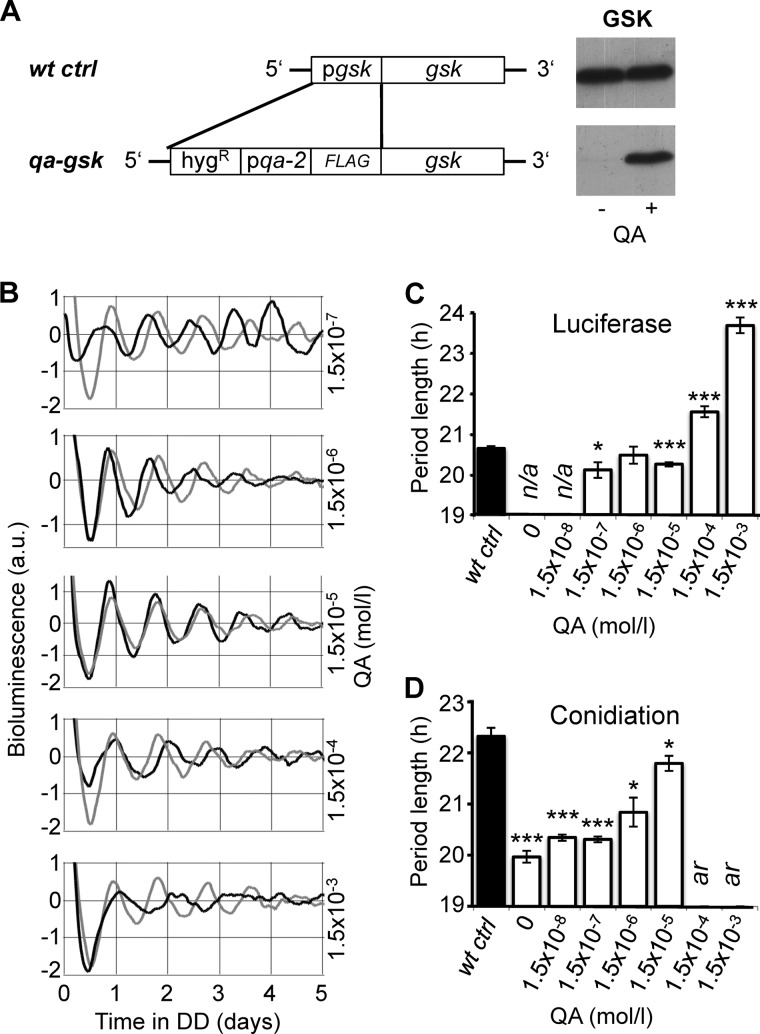FIGURE 1.
Dose-dependent expression of GSK modulates the period length of the circadian clock. A, schematic representation of the knock-in cassette used to replace the gsk promoter with the QA inducible qa-2 promoter. The cassette was transformed into the ras-1bd, pfrq-luc strain, which expresses luciferase under the control of the frq promoter. Representative Western blots show levels of GSK in the qa-gsk strain compared with its corresponding background control strain wt ctrl. Cultures were grown in light at 25 °C in the presence or absence of 1.5 × 10−3 m QA. B, rhythmic expression of the frq-luc promoter in qa-gsk (black traces) and wt ctrl (gray traces) in the presence of the indicated QA concentrations. Luciferase activity of the strains was continuously monitored in DD after a 1 h light pulse. Representative bioluminescence records of individual cultures are shown. C, summary of the average period lengths of qa-gsk (white bars) and wt ctrl (black bar) as determined by luciferase measurements at the indicated QA concentrations. Error bars show ± S.E. For wt ctrl the average period length at all QA concentrations is shown. n/a, experiment was not performed under these conditions. See also supplemental Table S1. D, summary of the average period lengths of qa-gsk (white bars) and wt ctrl (black bar) grown on racetubes with the indicated QA concentrations (± S.E.). For wt ctrl the average period length at 0 and 1.5 × 10−3 m QA is shown. See also supplemental Table S2. ar, arrhythmic. * and *** indicate p values of ≤0.05 and ≤0.0005, respectively using two-tailed Student's t-test.

